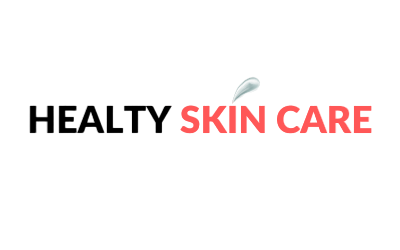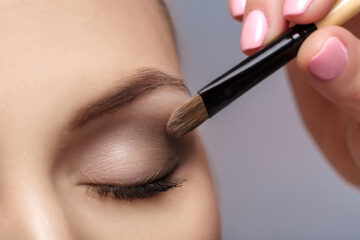In recent years, the demand for cruelty-free cosmetics has soared. From eco-conscious consumers to beauty enthusiasts, more people are questioning the ethics behind their favorite skincare and makeup products. With growing awareness about animal welfare and environmental sustainability, the beauty industry is undergoing a significant transformation. This blog post will explore what cruelty-free cosmetics are, their impact, and how consumers can make more ethical choices.
What are Cruelty-Free Cosmetics?
Definition and Key Characteristics
Cruelty-free cosmetics are products that are not tested on animals at any stage of their development. This includes everything from the initial ingredient testing to the final product. Unlike traditional cosmetics that may involve painful and harmful tests on animals, cruelty-free products rely on alternative methods such as in vitro testing and computer simulations.
Differentiating Between “Cruelty-Free” and “Vegan” Products
It’s essential to understand that “cruelty-free” and “vegan” are not synonymous. While cruelty-free products are not tested on animals, they may still contain animal-derived ingredients like beeswax or lanolin. On the other hand, vegan cosmetics contain no animal ingredients but aren’t necessarily cruelty-free. Therefore, it’s crucial to look for certifications that guarantee both.
The Impact of Cruelty-Free Cosmetics
On Animal Welfare
The statistics around animal testing are alarming. According to the Humane Society International, millions of animals are subjected to testing each year, suffering through procedures that often result in severe pain, distress, or death. Case studies have shown that eliminating animal testing not only reduces unnecessary suffering but also encourages the development of more humane scientific methods.
On the Environment
Cruelty-free brands are often committed to eco-friendly practices, including sustainable packaging. By using recyclable materials and reducing waste, these brands minimize their environmental footprint. For example, companies like Lush and E.L.F. Cosmetics have set industry standards for sustainable beauty, proving that it’s possible to be both eco-friendly and luxurious.
How to Identify Cruelty-Free Products
Understanding Labels and Certifications
Navigating the world of cruelty-free cosmetics can be confusing due to varying labels and certifications. Symbols like the Leaping Bunny, PETA’s cruelty-free logo, and the Choose Cruelty-Free (CCF) logo are reliable indicators that a product meets cruelty-free standards. Always look for these symbols when shopping to ensure you’re making ethical choices.
Researching Brands and Their Policies
Before making a purchase, take some time to research the brands you’re interested in. Many companies provide detailed information about their cruelty-free policies on their websites. Consumer reviews and third-party websites like Cruelty-Free Kitty and Ethical Elephant can also offer valuable insights into a brand’s commitment to humane practices.
Making the Switch: Tips for Consumers
Practical Advice for Transitioning to Cruelty-Free Cosmetics
Switching to cruelty-free cosmetics doesn’t have to be overwhelming. Start by gradually replacing your current products with cruelty-free alternatives. Focus on one category at a time, such as skincare or makeup, to make the transition smoother. Many cruelty-free brands offer travel-sized products, allowing you to try them out before committing to full-sized versions.
Addressing Common Concerns and Misconceptions
One common misconception is that cruelty-free products are more expensive. While some high-end brands do come with a heftier price tag, there are plenty of affordable options available. Another concern is the effectiveness of cruelty-free products, but advancements in technology have made it possible for these products to perform just as well, if not better, than their conventional counterparts.
The Future of Beauty: Trends and Innovations
Highlighting the Latest Developments in Cruelty-Free Beauty
The beauty industry is continuously evolving, with exciting innovations on the horizon. Advances in biotechnology, such as lab-grown ingredients and AI-driven product development, are paving the way for even more ethical beauty solutions. Companies are also exploring zero-waste packaging and refillable containers to further reduce their environmental impact.
The Role of Technology and Consumer Activism
Technology has become a powerful ally in the fight for cruelty-free beauty. AI algorithms help brands develop effective products without animal testing, while blockchain technology ensures transparency in supply chains. Consumer activism, fueled by social media, also plays a crucial role in holding companies accountable and driving change.
Brands Leading the Way
Profiles of Top Cruelty-Free Brands and Their Impact
Several brands have taken significant strides in promoting cruelty-free beauty. For instance, The Body Shop has been a pioneer in advocating against animal testing since its inception. Other notable brands include Urban Decay, known for its bold makeup products, and Kat Von D Beauty, which offers high-performance vegan cosmetics.
Success Stories of Brands That Transitioned to Cruelty-Free
Many brands that initially relied on animal testing have successfully transitioned to cruelty-free practices. Covergirl, one of the largest global beauty brands, earned Leaping Bunny certification in 2018, setting a precedent for others to follow. These success stories demonstrate that it’s possible to prioritize ethics without compromising on quality or profitability.
Conclusion
The shift towards cruelty-free cosmetics is not just a trend, it’s a movement that reflects a growing awareness of ethical and sustainable beauty practices. By choosing cruelty-free products, consumers can make a positive impact on animal welfare, the environment, and the future of the beauty industry.
Explore our curated list of cruelty-free products and join the community of conscious consumers making a difference in beauty standards today.





